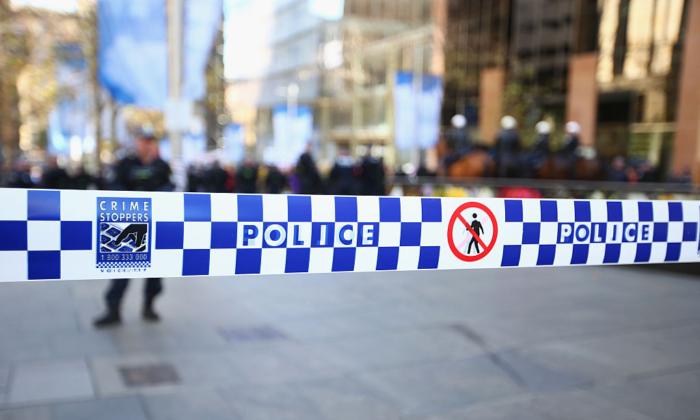Authorities still don’t know what caused a major Melbourne chemical factory blaze that leaked potentially toxic pollutants into local waterways.
The inferno at a Derrimut factory in Melbourne’s west on July 10 was the city’s biggest industrial fire in years, leading to explosions that sent chemical drums flying into the air.
No one was injured, with more than 180 firefighters battling the blaze for four hours before it was declared under control.
Several hotspots were still smouldering on July 12 afternoon, with fire crews waiting for the site to be demolished before the blaze could be snuffed out.
It was too early to give any indication about what caused the initial blast but it was not being treated as suspicious, Fire Rescue Victoria Deputy Commissioner Josh Fischer said on July 12.
“There’s a lot of leads that we’re following up, a lot of people that we’re interviewing,” he told reporters.
“Once we get access to the site, we'll have a clearer picture, particularly of the area of origin.
“This isn’t going to be a quick investigation.”
Mr. Fischer said authorities would remain at the scene for days if not weeks.
Drums containing kerosene, methylated spirits, methanol, and other substances were stored at the site, fuelling the blaze.
One worker died and two were injured in October in a fire explosion at the same building which houses chemical blending company ACB Group and fuel producer Powerplus.
Victoria’s Environmental Protection Authority issued the site with two notices but found it to be compliant after nine inspections following the first explosion, while WorkSafe conducted 24 visits and issued seven notices.
Both investigations into the 2023 fire continue.
“In terms of those ongoing investigations, they will take time,” the environmental authority’s Steve Lansdell said.
“They will continue long after the site may be handed back.”
More than three million litres of water and 40,000 litres of foam were used to fight the towering flames.
Mr. Lansdell said the authority’s focus was on managing community and environmental impacts from firewater runoff seeping into nearby waterways.
Authorities have pumped wastewater for offsite treatment, blocked stormwater drains with sandbags and deployed containment booms to stop it spreading further downstream.
Residents have been told to keep themselves and their pets away from Kayes Drain, Cherry Creek, Laverton Creek, and Andersons Swamp.
Mr. Lansdell said real-time water sensors had been placed at different points along Laverton Creek and Cherry Creek, as well as the inlet and outlet of Cherry Lake.
No impacts have been detected at Cherry Lake but lower dissolved oxygen levels have been picked up in Laverton Creek.
“We haven’t seen any fish deaths or impacts to bird life at the moment,” he said.
“We'll be monitoring really closely because often it can take 24 or 48 hours.”
Mr. Lansdell said it could take weeks or months for the waterways to recover.
Contamination from chemical storage sites includes a diverse range of toxic substances such as per and polyfluoroalkyl substances (PFAS) and heavy metals.
PFAS are often called “forever chemicals” because they persist in the environment and the human body for more than 35 years and have been linked to health issues such as cancers and thyroid diseases.
A fire in a Footscray-Tottenham chemical factory in 2018 resulted in levels of PFAS chemicals 16 times higher than the safe recreational water quality levels downstream from the site for two weeks after the incident.







